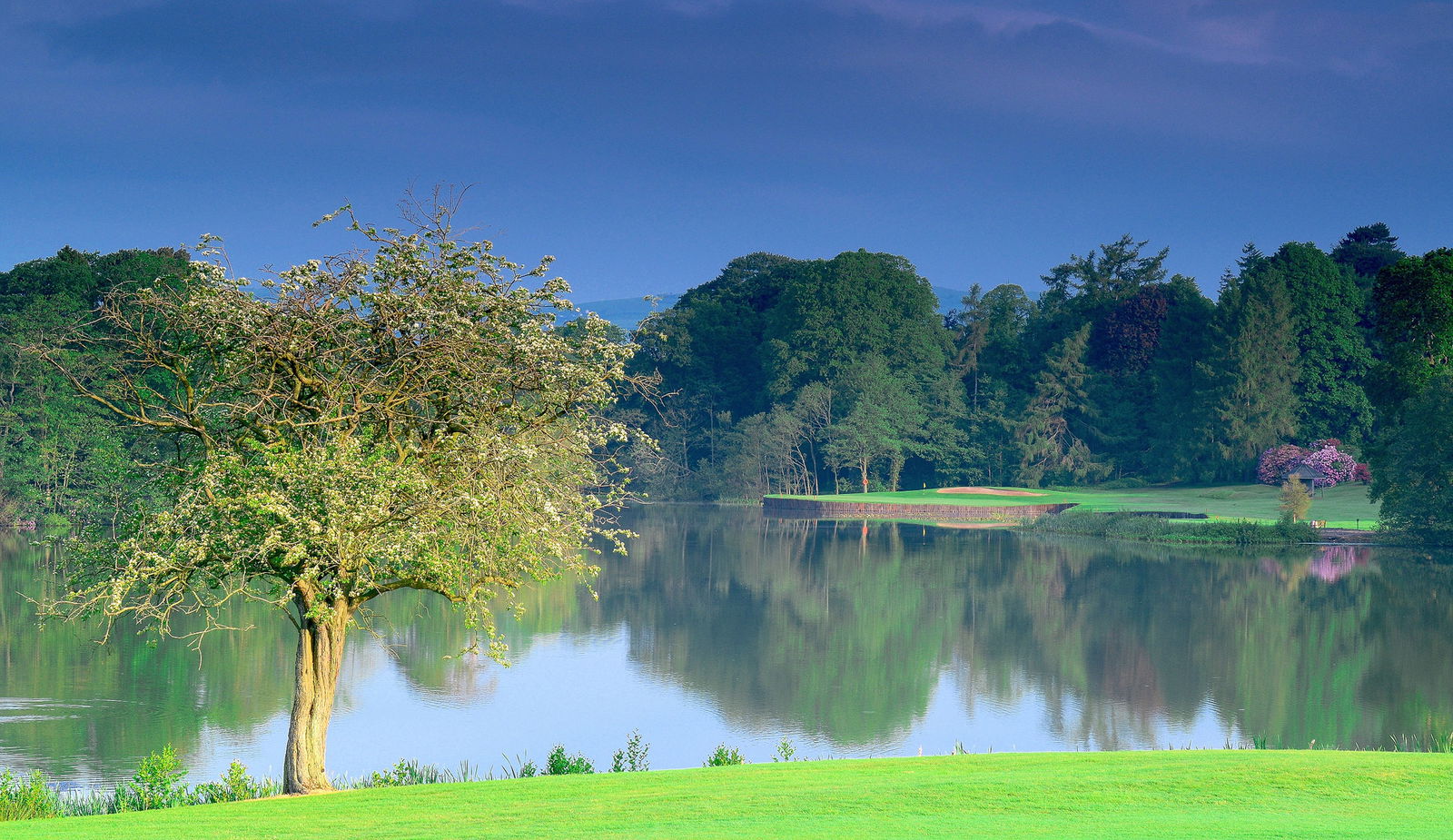Goodwood, Downs course: review
Glorious golf in a glorious setting - it must be glorious Goodwood

Glorious golf, glorious setting, it must be glorious Goodwood.
The iconic estate in the shadow of the South Downs lies five miles from the cathedral city of Chichester in West Sussex and affords spectacular views over the south coast, the Solent and the Isle of Wight.
Goodwood boasts a world famous racecourse, a motor circuit that hosts the legendary Festival of Speed and the Revival, its own aerodrome (pilot-golfers, take note) and two sumptuous golf courses, the members-only Downs course and the pay-and-play Park course around Goodwood House.
The Downs Course – available for society days – plays 7,104 yards off the furthest of the five tee options, and is a strenuous walk over rolling downland. If a full-on yomp floats your boat, shoulder the sticks and crack on, but the plentiful buggies are highly recommended.
The Kennels, the 18th century Grade 1 listed Georgian clubhouse, is your first taste of golf at Goodwood and gives a sense of the history and grandeur of the estate. The wood panelled upper corridors and locker room have something of an Augusta National air of understated elegance.
Golf was first played at Goodwood in 1901 when the 6th Duke of Richmond laid out some holes , but the basis for the current Downs course was designed in 1914 by legendary golf architect and five-time Open champion James Braid, who also sketched out Gleneagles and Carnoustie.
It has recently undergone renovation and modernisation by leading golf architect Tom Mackenzie. The chalk downland provides superb drainage and gives fast-running fairways and firm, true greens.
The first hole, in the grounds of the Kennels, is an innocuous looking par three into a punchbowl green, but if the wind is from the north and whistling off the tops, the hole plays all the way.
Swinging through a tunnel under the road, it is a stiff climb to the second tee, opening onto broad views of the Downs and the sparkling stands of the racecourse up in the distance.
The par-four second – a combination of two of James Braids original holes – jolts you right out of that early-round reverie. An open enough drive leaves you teetering on the edge of a dramatic cliff, with the green far below you. It’s unnerving and tough to judge the distance. A lone tree standing sentinel on the edge of the escarpment is an added obstacle.
The par-four third, the second hardest on the course, also pumps the blood a bit faster with a tree-lined dog-leg right off the tee to start a stretch of three holes that snake up the valley floor.
The line off the fourth tee is the gleaming white of the racecourse’s Sussex Stand far above, while the fifth bends to the left into a raised green guarded by greenery and a centuries-old specimen yew tree.
The elevated sixth tee gives the first views of the coast laid out below and a chance to open the shoulders and try to drive the green of the reachable par four, perhaps lining up on the spire of Chichester cathedral.
The course changes character with another abrupt climb to the seventh tee. The dog-leg par four skirts downland fields on an exposed spine running south towards the sea, with wide vistas to the Isle of Wight and Portsmouth’s Spinnaker Tower to the west. If the wind is coming from its customary south west angle, expect breeze off the right to play havoc.
Behind the seventh green is the halfway house, dubbed the Goodwood Gazebo, stocked with all manner of sustenance. The walls are adorned with pictures of famous players to have stopped off, including course ambassador Justin Rose and Ryder Cup team-mate Ian Poulter, Ant and Dec, Jodie Kidd and Bruce Forsyth.
Leaving the Gazebo's comforting arms, the short but deceptive eighth awaits and then a blind drive down the ninth before turning back uphill for the inward half. The second shot on the 10th is easy to leave short, while the long par-five 11th dives down dale and back uphill, offering the classic dilemma of whether to lay-up to the cross bunkers or try to fly them.
The 12th is a picturesque par three surrounded by sand, while the 13th plunges down to a green nestled in woodland.
The 14th, at the south west extremity, is the hardest hole at the best of times, even with the prevailing wind behind you. With the breeze out of the north, it plays as a monster par four. The 15th takes you back uphill to the Gazebo before the nearly 600-yard 16th winds downhill towards Goodwood House.
The finishing holes occupy the same patch of woodland as the first, with the 17th a par three over a lake and 18 a classic tree-lined parkland test back to the Kennels.
Sublime views, a variety of tight parkland and wide open downland, a decent strategic test and the grandeur of Goodwood make an impressive package. Glorious is about right.
Par: 71/72
Length: 7,104 yards off the silver tees
Green fee: Members only, but society days available
Website: www.goodwood.com/golf
Have you played Goodwoods' Downs Course? What was your experience like? Share your thoughts in the forum, on Twitter, on Facebook or visit us on Instagram or YouTube.

